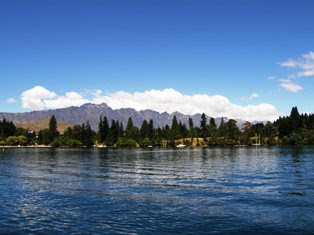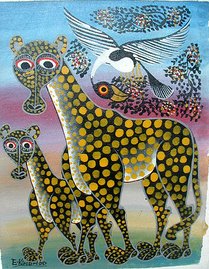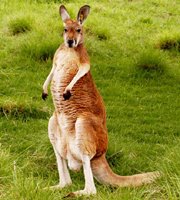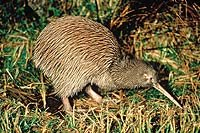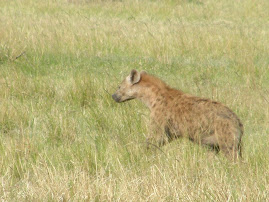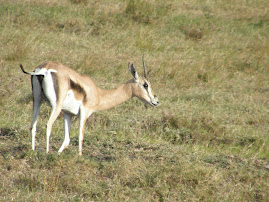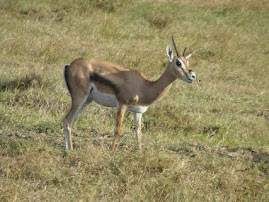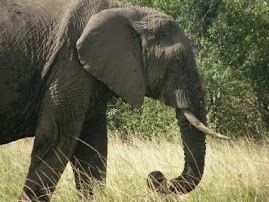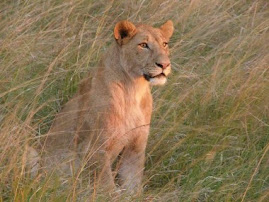The rain has continued on the west coast of the South Island, for 10 days. On average, the total was 45 inches. Some places at higher elevation get over 470 inches a year! The day I selected to go on a tour to the Milford Sound, the sky cleared and the day turned out to be perfect. Due to the rains, the waterfalls along the way were spectacular, although the driver said we should really try to see them during a rain. (Huh?) The key word here is "see" them, and "try" is the critical qualifier. The tops of the ridges are in cloud during a rain, so ....
Anyway, as we started, I got a fairly good shot of The
Remarkables - so named because they are only one of 2 ranges that run north to south (http://en.wikipedia.org/wiki/The_Remarkables) or, as our driver pointed out, are oriented to magnetic north. That, by the way, is hooey because magnetic north shifts and the mountains obviously do not. Would truly be remarkable if they did, I admit, but they don't.

Our first stop was at the original
bungy site. I mean, the very first in the world. You can imagine the permit process and the officials that needed convincing that people wouldn't be killed and local governments subsequently sued.

These are the men who did it, and they are revered by
bungy enthusiasts, though not necessarily the young folk who roam the country seeking out
bungy sites. Ah, the young, so blissful in their ignorance.

The bridge from whence it all began, and from whence it all still happens. At $160 a pop.

Recognize these livestock? They are wapiti deer - what we call elk. Introduced as sporting game, they eventually became a pest and a bounty was placed on their tails. Also eventually, it was discovered that people would actually pay money for the meat, and now wapiti are raised just as any other livestock, and the venison sold mostly to Germany and North America. I didn't find much in the stores, surprisingly. Sort of like Colorado peaches, I think. Anyway, these does have a good life, and the bucks don't have to work hard to maintain or protect their harems, so I suppose it's all good.

Te Anau, like Queenstown itself, is a jumping off point for several tramping tracks. The town only has about 1500 - 3000 people currently (seasonal variation) and land / housing is quite inexpensive. Based on scenery alone, I could live anywhere between Te Anau and Milford.



I'm so happy that I got to experience another of New Zealand's quintessential moments: moving sheep from one paddock (pasture) to another. This was a rather small herd, and obviously ready to be sheered. The car was one of the "herders," by the way.

The kea, the world's only alpine parrot, is about the size of a pigeon. It's not its coloration that makes it interesting, but rather its behavior. It strips cars of their windshield wiper blades, door moldings, and other rubber parts. It doesn't eat them, but rather delights in the process of chewing it up. Many a tramper has returned to the car park to find their cars mysteriously altered.

The Sound, from seaward. Captain Cook never saw this site, as from the Tasman Sea the entry is not evident because of the way the land juts out, creating a kind of curved pathway.

Milford Sound is actually not a sound at all. It is a fjord- that is, carved out by a glacier. A sound is carved out by river action.
I didn't write down what the captain was saying as he described what we were seeing, because I was concentrating on taking pictures and video clips. I think this mountain, off to one side of the Milford Sound, is Buchanan.

This waterfall was made all the more spectacular by the recent rains. The captain showed his sense of humor by running the bow of his ship right into the spray, potentially soaking those of us standing at the bow for photos. We ducked under the bulkhead until the laughing was over.

Is the land end of a sound called the "head" or the "foot?" No matter, this huge waterfall bordered the appropriate appendage of the Milford. It is higher than Niagara, and once again in full bloom due to the rains.

The intimidating Mitre Peak (http://en.wikipedia.org/wiki/Mitre_Peak_(New_Zealand) rises to 1692 meters (over 5551 feet), almost straight up from sea level.

As we re-entered Queenstown, another shot of The Remarkables.









